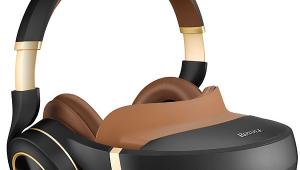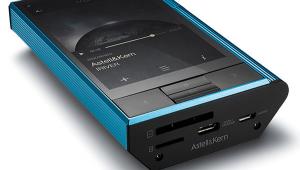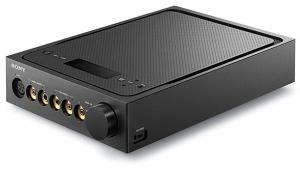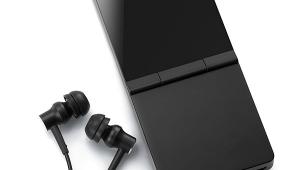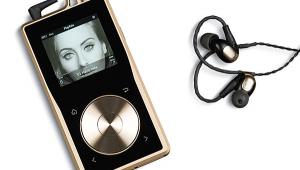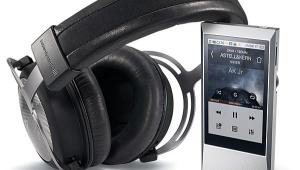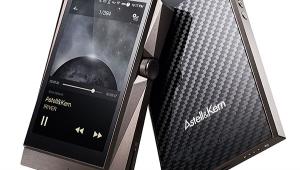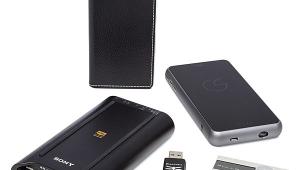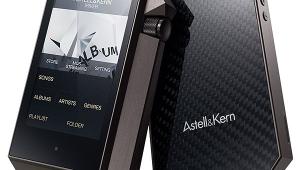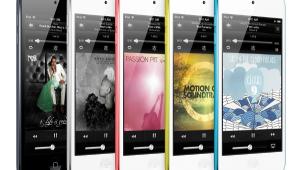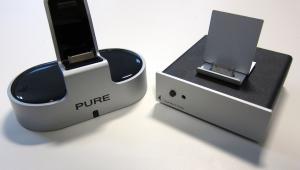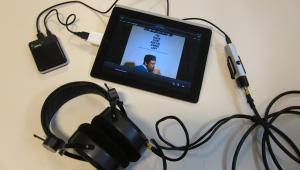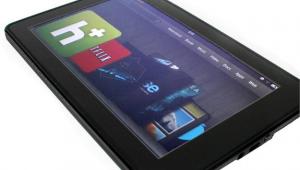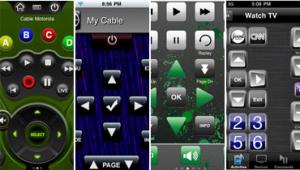Five Portable Hi-Res DACs Compared Oppo HA-2 Amp/DAC
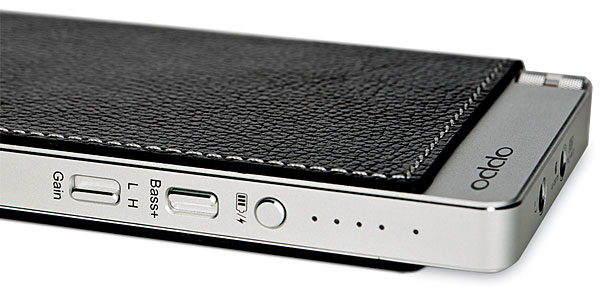
PRICE $299
AT A GLANCE
Plus
Slim shirt-pocket form factor
Phone-friendly
Resolution up to 394/32 plus DSD
Minus
Not an ideal match for Oppo’s own headphones
THE VERDICT
The Oppo HA-2 sounds fabulous, supports digital connections for a wide range of smartphones, and can even charge a phone.
Oppo’s Blu-ray players are reference-quality, and the company’s planar headphones are winning positive reviews. The HA-2 is the more portable of their two amp/DACs.
To handle this slim leather-sheathed beauty is to love it. About the size of a smartphone, it’s just a half-inch thick, not terribly heavy, and shirt-pocket-friendly. A cylindrical knob for power and volume is at top left. Headphone and combination line in/out jacks are on top. On the right side are pinpoint power indicators and switches for bass boost and headphone gain. The bottom includes USB A and Micro-B ports plus a three-way input switch that selects either of the two USB digital inputs or the analog input.
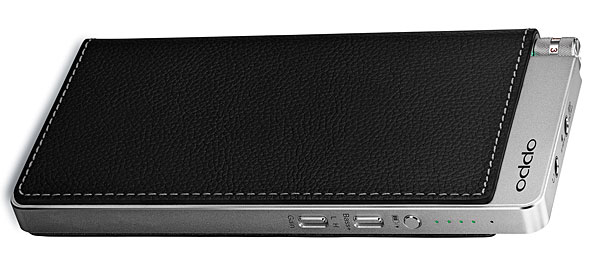
The HA-2 handles file resolutions up to 384-kHz/32-bit plus DSD. While there are few if any 384/32 commercial downloads, internal processing with 32-bit depth prevents software volume controls from reducing dynamic range or truncating bits. As always, Windows driver installation is required for files over 96/24. Volume control of USB sources is mapped onto the DAC chip, which can then adjust volume without use of a bit-truncating DSP. Twiddling the grippy, knurled volume knob for further adjustments is a pleasure.
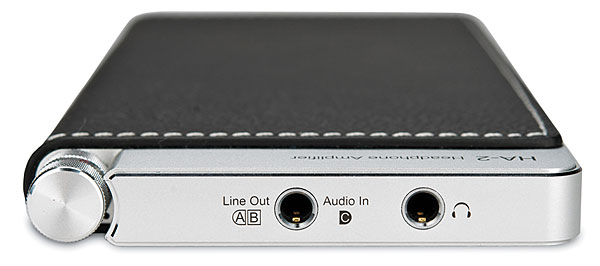
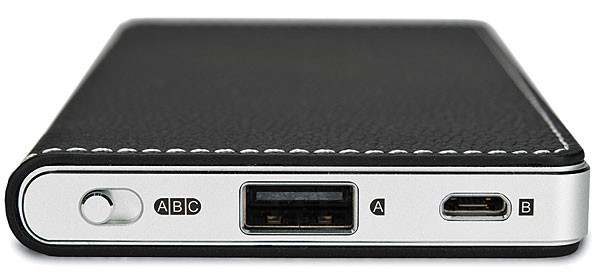
The Class AB amp runs on battery power for non-computer sources. It is specified to play for 13 hours with analog input or 7 hours with digital input, and it charges in 90 minutes with the supplied power adapter (or longer via computer USB jack). The battery can charge connected smartphones. Supplied cables include analog, USB Micro-B, and Apple Lightning/USB A.
Sennheiser’s cans consistently flattered the Oppo. The two aced the lossy tracks, making the best of low-bit-rate Ramones and Jorma and beating every other roundup combo in their control of Sandy’s steely wail and Dvořák’s orchestral swells. Among the CD-quality tracks, Marianne’s voice was well integrated with the church ambience, Teddy’s edgily recorded vocals made “perfect sense now!,” and Yes was lavished with “beautiful, irresistible flow, listenable but not too laid-back or dumbed-down.” Oppo/Senn didn’t lose steam in the hi-res tracks: Nataly’s challenging peak was “fatigue-free,” and the Saint-Saëns—whose organ/orchestral weaponry demands to be played loud—had that elusive “hi-res ease.”
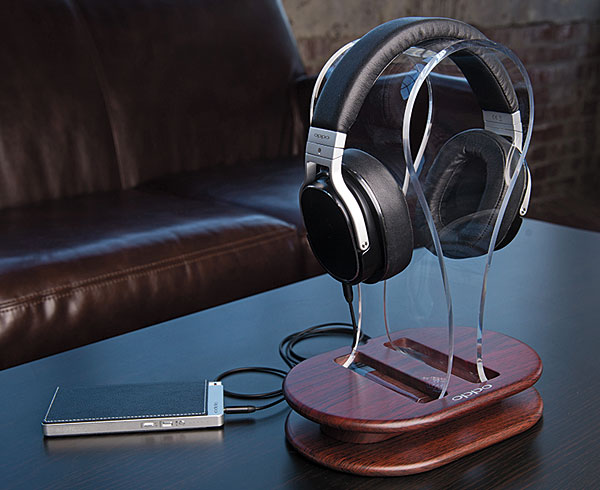
Ironically, the Oppo amp/DAC was less consistent with the Oppo headphone, at least on my test tracks; maybe the thick, darkish voicing of both was too much of a good thing. True, they were “best case for lossy” on the Ramones and downplayed the lossy artifacts on Jorma’s acoustic guitar. They also minimized the hardness of Dvořák’s peaks and Teddy’s vocals. But they “rolled off” Sandy’s guitarists, “took the sparkle and chime” out of Yes guitarist Steve Howe’s 12-string acoustic, and “downplayed” textures in the Saint-Saëns—though the Ali Akbar Khan raga was “fully realized,” with the sitar rising out of the haze like a metallic dragon.
The Oppo did OK with the often tetchy Sony headphone on the low-bit-rate lossy tracks, and considering how forthrightly the Sony reveals lossy artifacts, that’s actually high praise. As resolution climbed to CD-quality, Yes’ 12-string guitar harmonics were “a delight,” even if the mellotron was “a little hot,” and other tracks were good if not exceptional. If Marianne had “less depth” and Bach was “dry,” that was mostly the headphone. But peak moments in Nataly and Saint-Saëns induced discomfort.
The Oppo HA-2 is beautifully designed and thrives with neutrally voiced headphones. It tells the truth, with a subtle spin, often superbly.
Specs
Dimensions (WxHxD, Inches): 2.7 x 6.2 x 0.5
Weight (Ounces): 6.2
Inputs: USB A (1), USB Micro-B (1), 1/8-inch analog
Outputs: 1/8-inch analog headphone (1), 1/8-inch stereo line (1)
Output Power: 300 mW, 16 ohms; 220 mW, 32 ohms; 30 mW, 300 ohms
Output Voltage: Up to 3 V RMS
Output Impedance: 0.5 ohms
Compatible Headphone Impedances: 16 to 300 ohms
Sampling Rates and Bit Depths: 44.1-384 kHz, 16/24/32-bit, DSD 64-128-256
Upsampling: Limited (chip operates at 100 MHz)
DAC: Sabre ES9018-K2M
Windows Drivers Installed: ASIO
Oppo Digital
(650) 961-1118
oppodigital.com
- Log in or register to post comments

